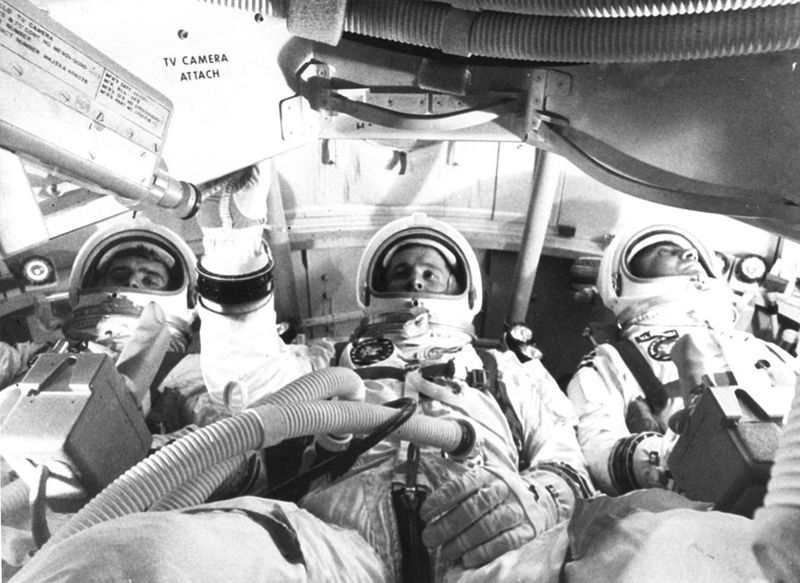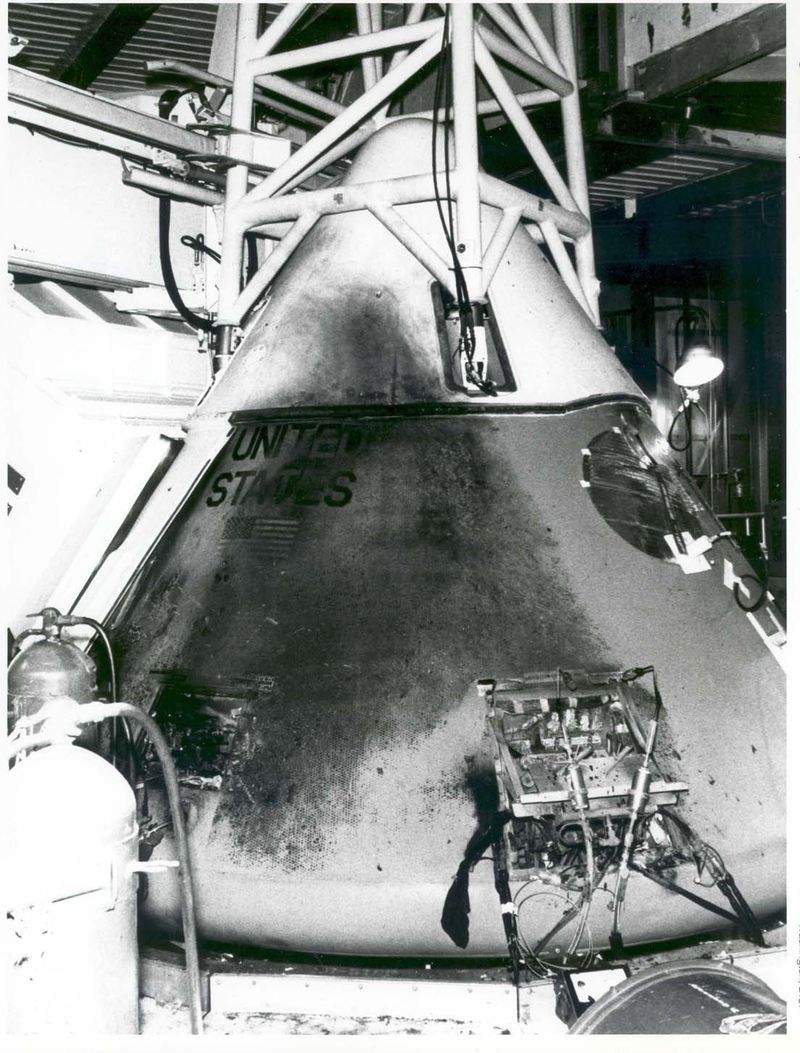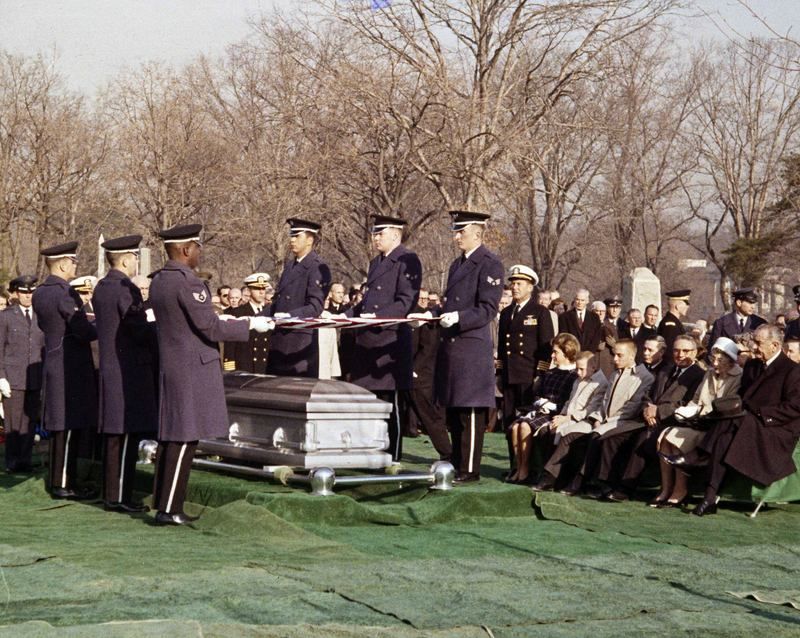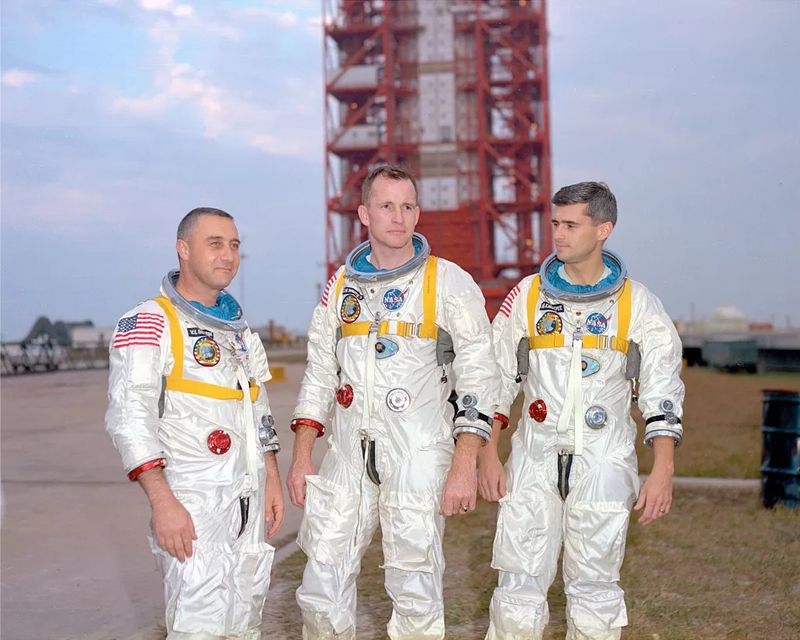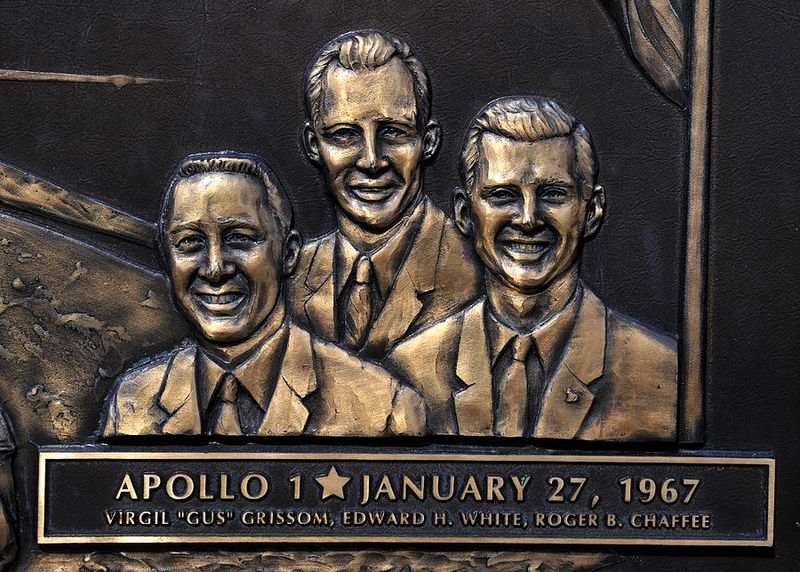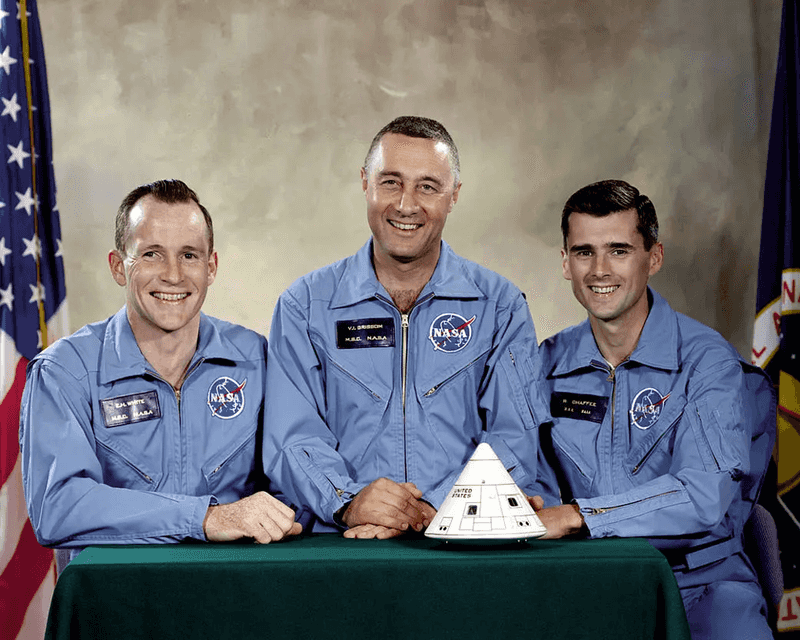Before a man ever set foot on the moon, NASA faced one of its darkest moments. On January 27, 1967, a routine pre-launch test for Apollo 1 turned into a deadly inferno that claimed the lives of three astronauts in just 17 seconds. The tragedy shocked the nation, reshaped the space program, and led to changes that would define the future of human spaceflight.
1. The Crew: Three Heroes with the Right Stuff
Apollo 1’s crew consisted of Virgil “Gus” Grissom, Ed White, and Roger B. Chaffee. Grissom, a space veteran, had flown both Mercury and Gemini missions. White was celebrated for his historic spacewalk in 1965. Chaffee, a younger astronaut, was preparing for his first mission. Together, they embodied NASA’s ambitions in the Space Race. From seasoned leaders to eager rookies, the trio symbolized courage and pioneering spirit. Their dedication to exploration made them national icons, setting a powerful example for future astronauts. Their tragic loss left a deep impact on the nation’s psyche and NASA’s mission.
2. The Test That Wasn’t Supposed to Be Dangerous
The crew entered the Apollo 1 capsule for what was considered a routine “plugs-out” test, designed to check systems on the launch pad. This low-risk procedure involved no fuel onboard and a non-active rocket. However, inside the spacecraft was a perilous combination: a 100% oxygen environment, flammable materials, and faulty wiring. This mix created a recipe for disaster. The test, initially deemed safe, unfurled into a catastrophic event that challenged perceptions about safety in space exploration. It was a stark reminder of how quickly things could go wrong in a seemingly controlled environment.
3. The Fire Started—and Ended—In Seconds
At precisely 6:31 p.m., a spark ignited a fire in Apollo 1’s pure-oxygen atmosphere. Grissom’s urgent call, “Fire in the cockpit!”, echoed over the communication lines. Within a mere 17 seconds, the fire had consumed the capsule, claiming the lives of all three astronauts. Rescuers, unable to open the hatch in time, faced an agonizing delay. The fire’s brutal speed and intensity were a sobering testament to the dangers of spaceflight. This harrowing moment underscored the need for rigorous safety protocols and rapid emergency responses in future missions.
4. The Nation—and NASA—Went Into Mourning
The loss of Apollo 1 stunned a nation that had placed its hopes in the brave astronauts. These were no ordinary men; they were symbols of American ambition and heroism. Their deaths forced NASA to confront its own vulnerabilities. The Apollo program faced a nearly two-year halt, sparking public doubt and political pressure. Yet, from this tragedy arose a newfound resolve. The nation mourned deeply, but the dream of space exploration endured, spurred by the desire to honor the sacrifice of these three pioneers. Their legacy became a driving force for change and improvement.
5. A Total Overhaul of Safety Protocols Followed
Following the Apollo 1 disaster, NASA undertook sweeping changes to its safety protocols. The spacecraft’s atmosphere was altered to be less flammable, and all cabin materials were replaced with safer alternatives. The hatch was redesigned for rapid emergency escape, and quality control measures were overhauled. These changes marked a significant shift in NASA’s approach to mission security. The painful lessons of Apollo 1 emphasized that speed could never trump safety. This overhaul not only protected future astronauts but also set new standards for the entire aerospace industry.
6. Their Names Were Etched into Spaceflight History
Though Apollo 1 never launched, its crew achieved immortality in the annals of space history. Grissom, who narrowly escaped drowning during a Mercury mission, died as a boundary-pushing adventurer. White, known for his spacewalk, inspired generations with his bravery. Chaffee, though new, was training for greatness. NASA honored them with memorials, tributes, and by including their memory in later missions. Their legacy was cemented in space exploration’s fabric, serving as an enduring reminder of the risks faced by those who dare to reach for the stars.
7. Apollo 1’s Legacy: Every Moon Landing Bears Their Shadow
When Neil Armstrong took his historic steps on the moon in 1969, he did so on a mission shaped by Apollo 1’s trials. Every success thereafter—Apollo 11, the Space Shuttle, the International Space Station—was informed by the lessons learned from that tragic fire. The sacrifices of Grissom, White, and Chaffee became a foundation for safer space exploration. Their story continues to inspire a commitment to safety, innovation, and the pursuit of knowledge. Apollo 1’s legacy is a testament to the resilience and determination that drive human progress into the cosmos.

